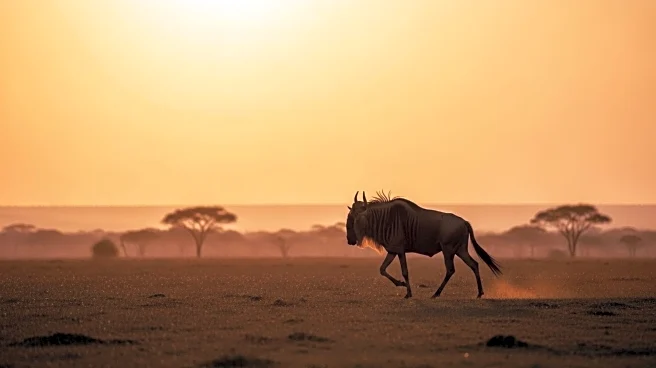What's Happening?
Recent research has utilized AI models to provide a more accurate count of wildebeest involved in East Africa's 'Great Migration.' Traditionally, estimates suggested that up to 1.3 million wildebeest participated in this annual event across the Serengeti Mara landscape. However, AI analysis of satellite images indicates that fewer than 600,000 wildebeest may actually be involved each year. The study employed two deep-learning models, U-Net and YOLOv8, trained to identify wildebeest from a dataset of manually labeled images. These models were applied to high-resolution satellite imagery, covering over 4,000 square kilometers, and produced consistent results across different survey periods in August 2022 and 2023. The findings suggest that previous aerial survey estimates may have been overestimated, while AI-based counts offer greater accuracy and consistency.
Why It's Important?
The use of AI in wildlife population monitoring represents a significant advancement in ecological research and conservation efforts. Accurate population estimates are crucial for developing targeted conservation strategies, especially for species facing challenges such as habitat loss and fragmentation. The AI models provide a reliable method for tracking wildlife populations, reducing the need for extrapolative projections that can introduce errors. This technology not only enhances the precision of wildlife counts but also supports the sustainability of ecosystems by informing conservation policies. The shift towards AI-based methods could lead to more effective management of wildlife populations and their habitats.
What's Next?
The research team plans to expand the use of AI models to other species, such as African rhinos, to further improve wildlife census methods. This approach could be adopted for various species distributed across large landscapes, offering a scalable solution for global wildlife monitoring. As AI technology continues to evolve, it may become a standard tool in ecological research, providing insights into population dynamics and migration patterns. Conservationists and policymakers may increasingly rely on AI-driven data to make informed decisions about wildlife protection and habitat preservation.
Beyond the Headlines
The integration of AI in wildlife monitoring raises ethical considerations regarding data privacy and the potential impact on local communities. Additionally, the reliance on satellite imagery and AI models may shift traditional conservation practices, requiring new skills and technologies. Long-term, this could lead to a transformation in how ecological data is collected and utilized, influencing global conservation strategies and policies.












